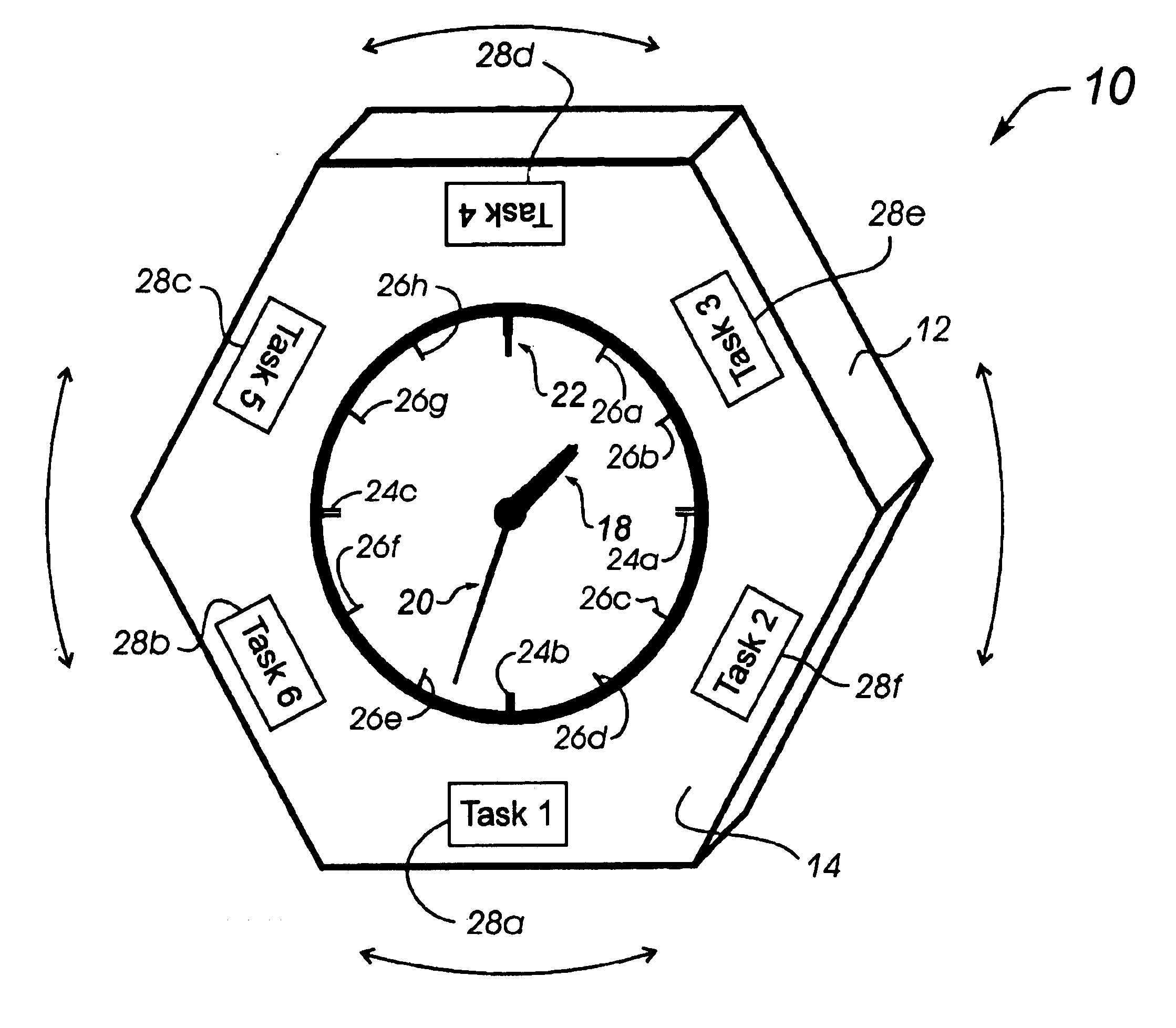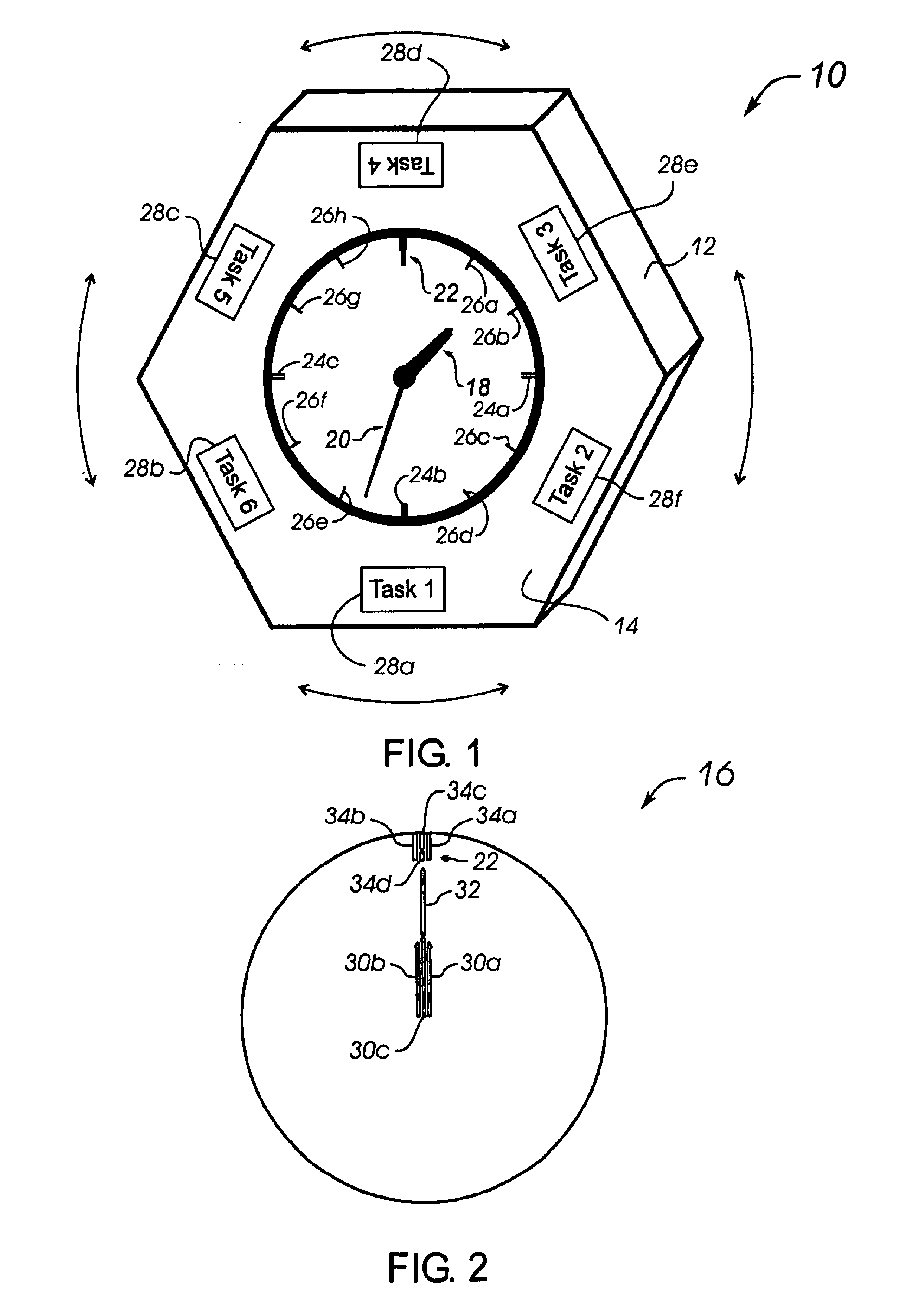Apparatus and methods of providing enhanced control for consumers
a technology of enhanced control and consumer, applied in the direction of electromechanical unknown time interval measurement, instruments, horology, etc., can solve the problems of inconvenient office use, inability to track task time, inconvenient for an individual to obtain and use a series of stop watches, etc., to avoid strangulation or other injuries, easy to manufacture, and prevent injury to the neck of the wearer
- Summary
- Abstract
- Description
- Claims
- Application Information
AI Technical Summary
Benefits of technology
Problems solved by technology
Method used
Image
Examples
embodiment 1500
[0204]FIG. 34 is a tweezers portion 1500 which includes an automatic tweezing means which moves to pluck the hair, or other projection, which is interjected between the portions of the tweezing head. The present embodiment 1500 utilizes a tweezers body 1502 into which tweezers head portions 1504a, 1504b are retained that are connected by a joining member 1506a, 1506b, such as a wire or spring steel which retract toward the base in response to the movement of an actuator, such as a solenoid 1508. It will be appreciated that a number of mechanical contrivances may be implemented to alternatively retract or move the tweezing head portions, when an interjecting member is being grasped therebetween. The tweezers head portions 1504a, 1504b, are biased toward their normal (non-retracted) grasping position by a biasing member, such as a spring 1510a, 1510b. It should be appreciated that actuator 1508 may be powered in a number of ways, such as electronically (solenoid, motor, muscle wire) o...
embodiment 1900
[0216]FIG. 44 is a necktie embodiment 1900 according to the present invention shown in two parts, a first part 1902 with distal end 1903, and a second part 1904 with proximal end 1905 which are joined with a tension-controlled fastening means 1906. The tension-controlled fastening means 1906 may comprise any of a number of joining members which allow the halves of the tie 1902, 1904 to separate when a tension that exceeds a predetermined level is applied to the material of the tie. The joining member may comprise any form of fastening mechanism, such as selected from material having a predetermined breaking strength, snaps, hook-n-loop fasteners, and so forth. The tie may be configured with more than tension-controlled joint 1908, to assure that the tie can separate at a suitable location under a tension that exceeds the predetermined breaking strength.
[0217]FIG. 45 depicts a tension-controlled joint 1910 wherein a first portion 1912 of the tie having a hook fastener portion 1914, i...
PUM
 Login to View More
Login to View More Abstract
Description
Claims
Application Information
 Login to View More
Login to View More - R&D
- Intellectual Property
- Life Sciences
- Materials
- Tech Scout
- Unparalleled Data Quality
- Higher Quality Content
- 60% Fewer Hallucinations
Browse by: Latest US Patents, China's latest patents, Technical Efficacy Thesaurus, Application Domain, Technology Topic, Popular Technical Reports.
© 2025 PatSnap. All rights reserved.Legal|Privacy policy|Modern Slavery Act Transparency Statement|Sitemap|About US| Contact US: help@patsnap.com



